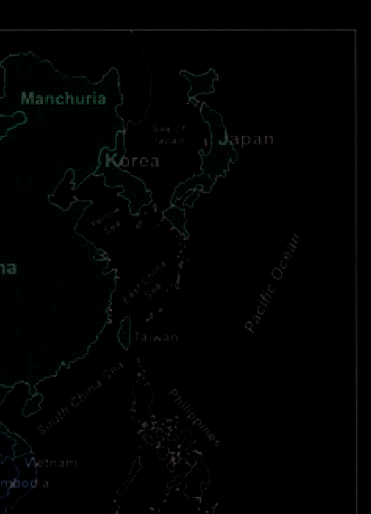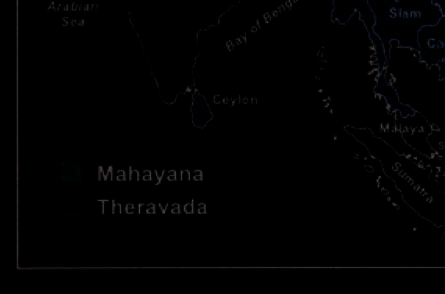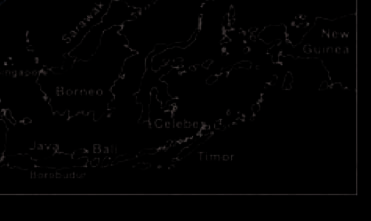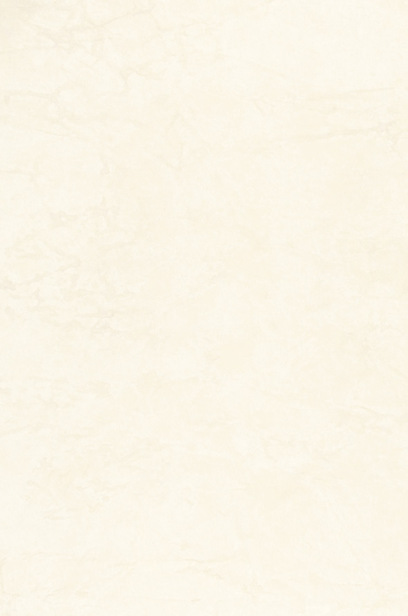An Illustrated Outline of Buddhism: The Essentials of Buddhist Spirituality (18 page)
Read An Illustrated Outline of Buddhism: The Essentials of Buddhist Spirituality Online
Authors: William Stoddart,Joseph A. Fitzgerald
Tags: #Philosophy

holds in thral . On the contrary, “higher
Māyā
”—mediated and made
accessible by divine revelation, as well as by inspiration and intellec-
tion—is liberating and saving. In Christian terminology, it is the dif-
ference between Eve and Mary. In Buddhism, it is suffering and release
from suffering.
The Founders of the great religions are incarnations of the
Logos
—
levels (2) and (3).4
Of what use are words of wisdom to a man who is unwise?
Of what use is a lamp to a man who is blind?
Dhammapada
4 For a very clear explanation, see Frithjof Schuon,
Form and Substance in the Religions
, chap. 5, “The Five Divine Presences” (Bloomington IN: World Wisdom, 2002).





52
An Illustrated Outline of Buddhism
Map of the Buddhist World
(circa 1900)
The map below indicates virtual y all of the countries which comprise
the Buddhist area of the world


53
(9) The Two Schools and the Two Cultural Forms
In the face of a reformed and reviving Hinduism and the irruption
and expansion of Islam, Buddhism began to decline in India in the
seventh century A.D. and by the thirteenth century had become virtu-
al y extinct in the land of its birth. It spread, however, to almost all of
Eastern Asia.
A few centuries after its birth, Buddhism began to crystallize
into two great schools, the Southern and the Northern. The Northern
school or
Mahāyāna
(“Great” or “Broad” Way), which began to take
form towards the beginning of the Christian era, called everything that
came before it
Hīnayāna
(“Smal ” or “Narrow” Way). Although the
term
Hīnayāna
has been applied diminishingly, it refers in a positive
sense to the original monastic or ascetic Way, and is not in itself dis-
paraging. The
Hīnayāna
school had many branches or sects, including
Theravāda
,
Mahāsānghika
,
Vātsīputrīya
,
and
Sarvāstivāda
.
Of these only
Theravāda
(the “Doctrine of the Elders”) survives. The Southern
school,
Hīnayāna
(in fact
Theravāda
),
comprises Ceylon (Sri Lanka),
Burma, Siam (Thailand), Cambodia, and Laos. The Northern school
Mahāyāna
,
comprises China, Tibet, Ladhak, Nepal, Bhutan, Mongolia,
Japan, Korea, and Vietnam.
The
Mahāyāna
and
Hīnayāna
art styles—as well as the two cultures
in general—have distinctive and recognizable “flavors”. In this connec-
tion, Frithjof Schuon has al uded to a certain ethnic and spiritual reci-
procity by observing that, in the
Mahāyāna
countries, Buddhism has
been absorbed by the “Yellow” genius, whereas in the
Hīnayāna
coun-
tries the “Yellow” genius has been absorbed by Buddhism. Metaphori-
cal y speaking, the
Mahāyāna
world is India become “Yellow”, whereas
Hīnayāna
Buddhists (e.g. the Theravādins of Indo-China) are “Yellow”
people who have, as it were, become Indian.1
It may be of interest to note in passing that the only Buddhist com-
munity in Europe are the Kalmuks, a Mongol people who, in the sev-
enteenth century, migrated westward from Central Asia to Russia—to
the region now known as Kalmykia, on the north-western shores of the
Caspian Sea between the Muslim regions of Astrakhan and Dagestan.
Theravāda
Buddhism is a continuation of original Buddhism, as
regards its form if not as regards its whole content.
Mahāyāna
Bud-
1 See Frithjof Schuon,
Castes and Races
(London: Perennial Books, 1982), p. 43, note 31.

54
An Illustrated Outline of Buddhism
dhism also derives from original Buddhism, but some of its charac-
teristic manifestations spring from a later inspiration. In some of its
aspects an influence from Hinduism is discernible.
The Scriptures of original Buddhism are recorded in Pali (a de-
rivative of Sanskrit), and this language remains the liturgical medium
of the Southern (or
Theravāda
) school. The original scriptural and li-
turgical language of the Northern (or
Mahāyāna
) school is Sanskrit,
but, in view of the geographical extension of
Mahāyāna
,
this is supple-
mented by Tibetan, Chinese, and Japanese. For more on the Scriptures,
see pp. 16-17.2
Mahāyāna
Buddhism, the second “Setting in Motion of the Wheel
of the Law” (
Dharmachakra-Pravatana
), is
characterized above all by
the doctrine and cult of the Bodhisattva
(see pp. 67-70 and 77). Fur-
thermore, in
Mahāyāna
countries, Buddhism general y finds itself in
a state of co-existence or symbiosis with one or more indigenous reli-
gions. In China, Buddhism co-exists with the “esoteric” and spiritual
(and yet, at the same time, popular) doctrine and traditions of Taoism,
and also with the “exoteric” and social (and yet, at the same time, aris-
tocratic) doctrine and traditions of Confucianism. In Japan, Buddhism
co-exists with Shintoism; in Tibet, it co-exists with Bön.
As can be seen from the table on page 10, Taoism, Confucianism,
Shinto, and Bön are branches of Hyperborean shamanism. Unlike the
various Aryan and Semitic religions, shamanisms are not “denomina-
tional” and exclusive. Thus, while it is impossible to be a member of
two different “denominational” religions at the same time, it is per-
fectly possible to be a member of a shamanistic and a denominational
religion at the same time. One sees this, precisely, in the case of the
Chinese, Japanese, and Tibetans, and also in the case of many Red In-
dians, who see nothing untoward in belonging to a Christian denomi-
nation while, at the same time, believing in and practicing the religion